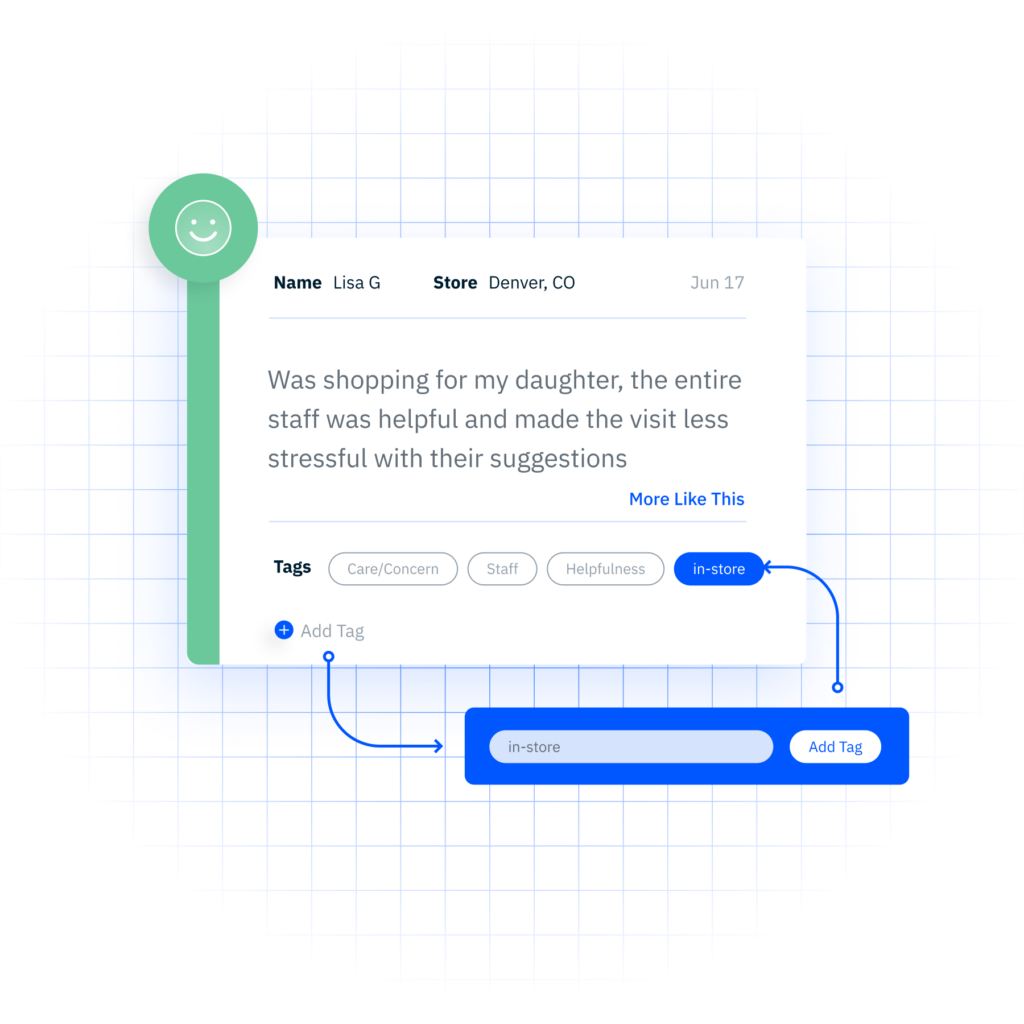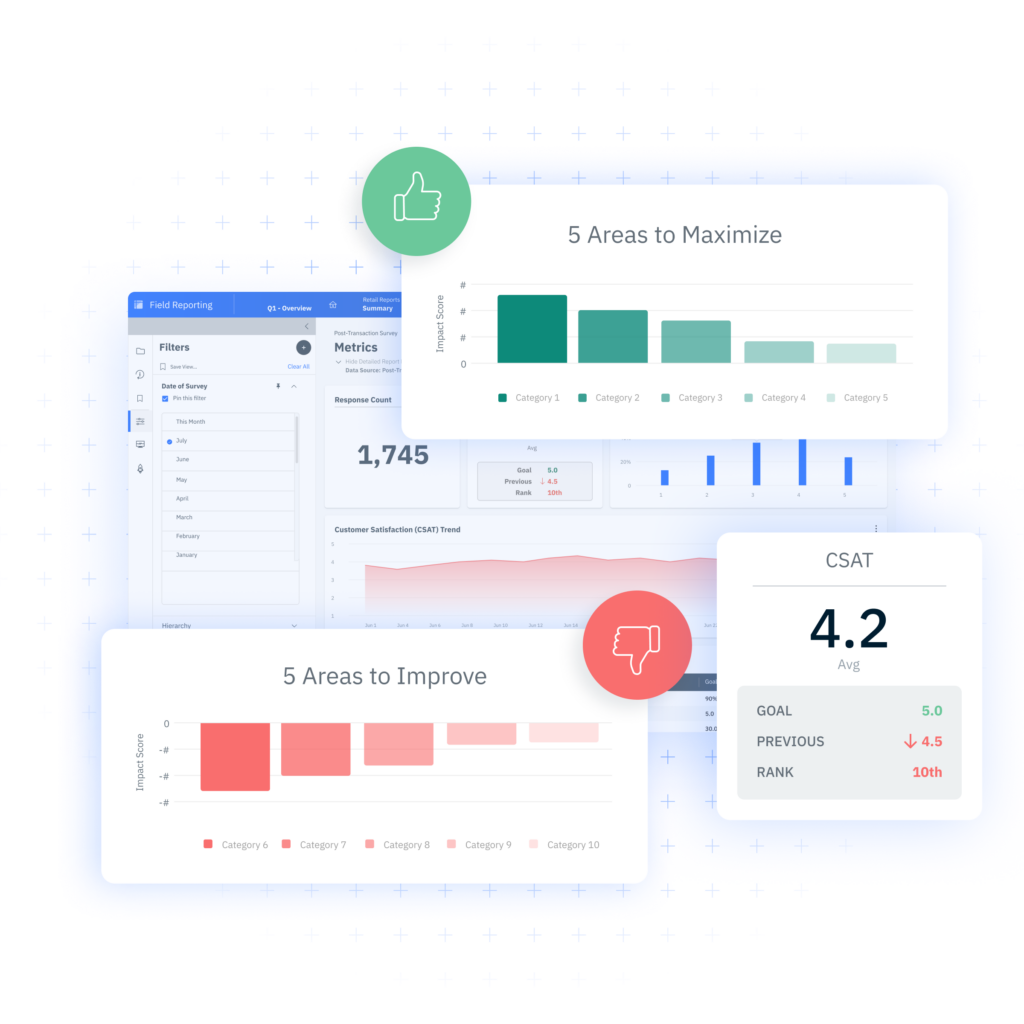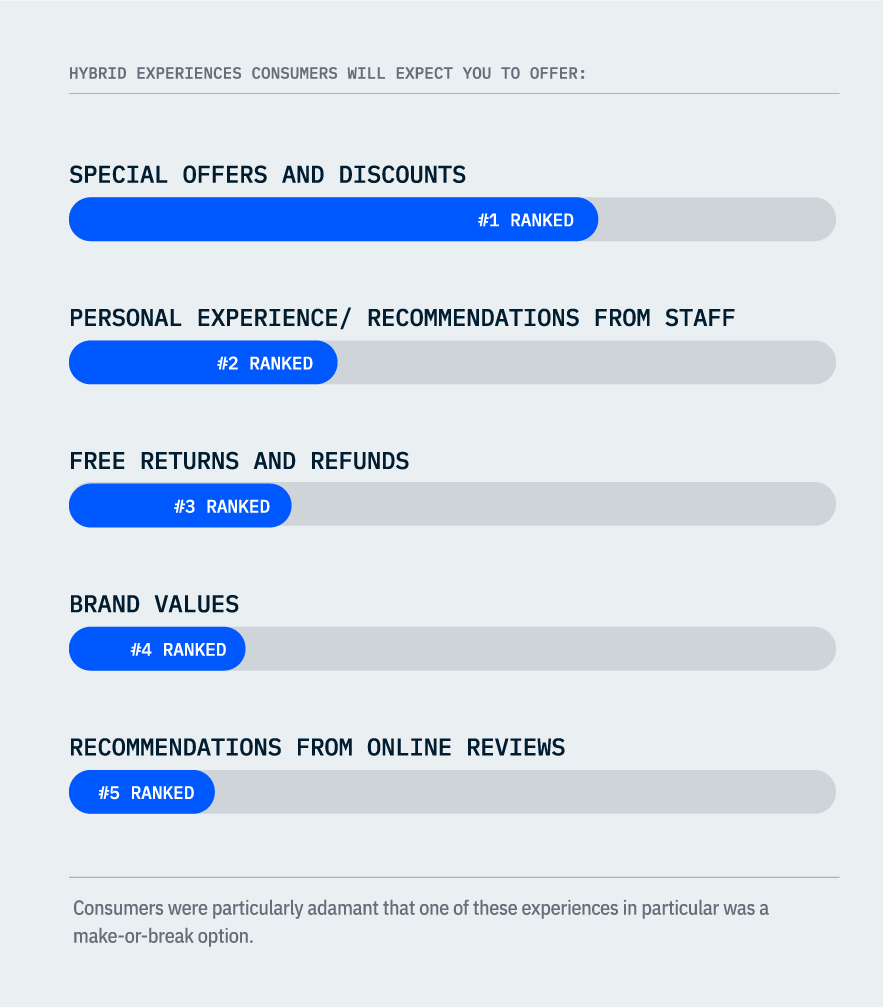The Complete Retail Customer Experience Guide

It can be argued that the customer experience is more important in retail than any other industry. With 93% of consumers reading reviews before making a purchase, and 58% of consumers being willing to drive further or pay more for a product with good reviews, a good customer experience and brand reputation management have never been more critical than it is today.
The retail customer experience is also a complex one. It encompasses the in-store experience just as much as it does the online experience. In order to master the retail customer experience, you first need to understand the whats, the whys, and the hows.
What is the Retail Customer Experience?
At its core, the retail customer experience encompasses every touchpoint a customer has with a brand, from the first interaction to post-purchase engagement. But, it goes beyond transactions, it also encompasses emotions, perceptions, and overall satisfaction with the brand from the view of the customer.
Why is the Retail Customer Experience Important
The retail customer experience has become increasingly significant in the success and sustainability of any business operating in the modern marketplace. Consumers can quickly become lifetime customers and brand advocates when they have continuous positive experiences with a brand. But, there are more benefits to a well-crafted retail customer experience that go beyond customer loyalty. Let’s examine a few:
1. Revenue Growth
Satisfied customers are more inclined to spend more and make repeat purchases. When the retail customer experience exceeds expectations, customers feel a connection with the brand, leading to increased spending and higher lifetime value. Positive experiences contribute directly to revenue growth as customers become more engaged and willing to invest in the brand.
2. Competitive Edge
In a crowded marketplace where products and services may seem similar, the retail customer experience becomes a powerful differentiator. Businesses that prioritize delivering exceptional customer experiences gain a competitive edge over their counterparts. Customers are more likely to choose a brand that provides not only quality products but also a memorable and positive overall experience.
3. Word-of-Mouth Marketing
Satisfied customers become brand ambassadors, sharing their positive experiences through word-of-mouth marketing. Recommendations from friends, family, or online reviews play a significant role in attracting new customers. A brand that consistently delivers excellent retail customer experiences is more likely to benefit from positive word-of-mouth marketing, expanding its customer base organically.
How to Improve the Retail Customer Experience
In order to improve your customer experience in retail stores, you will need to focus on two main types of experiences: in-store and digital. These two types of experiences are equally important in cementing customer loyalty and improving the overall experience that is associated with your brand.
Improving the Digital Retail Experience
Providing an exceptional online retail experience is crucial for capturing and retaining customers. Here are strategies to enhance the digital customer experience:
1. User-Friendly Website
Design and optimize your website for ease of use. Ensure intuitive navigation, quick loading times, and a seamless checkout process. A clutter-free and visually appealing layout enhances user experience and encourages visitors to explore and make purchases.
2. Personalization
Leverage data analytics and customer insights to personalize the online shopping experience. Implement personalized product recommendations, targeted promotions, and customized content based on individual preferences and past interactions. Personalization creates a more engaging and relevant experience for users.
3. Responsive Customer Support
Offer responsive and accessible customer support across various channels, including live chat, email, and social media. Providing real-time assistance and resolving issues promptly contributes to a positive online experience. Implement chatbots for immediate responses and streamline customer communication.
4. Mobile Optimization
Given the prevalence of mobile device usage, optimize your website for mobile responsiveness. Ensure that the online shopping experience is seamless and visually appealing on smartphones and tablets. Mobile optimization is essential for capturing the growing number of consumers who prefer to shop on mobile devices.
5. Secure and Transparent Transactions
Instill confidence in online shoppers by prioritizing the security of online transactions. Clearly communicate your website’s security measures, use secure payment gateways, and provide transparent information about shipping costs and return policies. A secure and transparent transaction process builds trust with customers.
Enhancing the In-Store Retail Customer Experience
While digital experiences are vital, the in-store customer experience remains a cornerstone of retail success. Here are strategies to enhance the in-store retail experience:
1. Store Layout and Design
Create an inviting and well-organized store layout that aligns with your brand identity. Consider factors like product placement, aisle navigation, and overall ambiance. An aesthetically pleasing and easy-to-navigate store layout contributes to a positive in-store experience.
2. Staff Training
Invest in comprehensive training programs for your staff to ensure they provide excellent customer service. Equip them with product knowledge, effective communication skills, and the ability to address customer queries. A well-trained and motivated staff enhances the overall in-store experience for customers.
3. In-Store Events and Promotions
Organize in-store events, promotions, or exclusive sales to create a sense of excitement and urgency. These initiatives not only attract foot traffic but also provide customers with a memorable and enjoyable shopping experience. Consider incorporating interactive elements or entertainment to make the events more engaging.
4. Efficient Checkout Process
Streamline the checkout process to minimize wait times and enhance convenience. Implement technologies like self-checkout kiosks or mobile payment options to offer customers faster and more efficient ways to complete their purchases. An efficient checkout process contributes to overall customer satisfaction.
5. Customer Feedback Stations
Place feedback stations within the store to encourage customers to share their opinions and suggestions. Use this feedback to make informed improvements and adjustments. Actively seeking and acting upon customer feedback demonstrates a commitment to continuously enhancing the in-store experience.
Using InMoment’s predictive customer analytics tool, you get automated insights from unstructured feedback that help you notice what needs to be improved, or what is performing well.

By focusing on both the digital and in-store aspects of the retail customer experience, businesses can create a cohesive and comprehensive strategy that caters to the diverse needs and preferences of their customer base. Integrating these strategies ensures a well-rounded approach that fosters customer satisfaction and loyalty across various channels.
How to Measure Customer Experience in Retail
Effectively measuring customer experience in retail is essential for identifying strengths, areas for improvement, and overall customer satisfaction. There are three common customer experience metrics that most companies will use to measure customer experience.
1. Net Promoter Score (NPS)
What it is: The Net Promoter Score (NPS) is a widely used metric that assesses customer loyalty by asking a simple question: “How likely are you to recommend our brand to others?”
How to measure: Customers respond on a scale from 0 to 10, categorizing them into promoters (9-10), passives (7-8), and detractors (0-6). The NPS is calculated by subtracting the percentage of detractors from the percentage of promoters.
Why it matters: NPS provides a direct indicator of customer satisfaction and loyalty. Higher NPS scores indicate a greater likelihood of customers promoting the brand.
2. Customer Satisfaction (CSAT) Score
What it is: CSAT measures overall customer satisfaction by asking customers to rate their experience on a numerical scale.
How to measure: Typically, customers respond on a scale of 1 to 5 or 1 to 10, indicating their level of satisfaction. The average score represents the CSAT score.
Why it matters: CSAT offers a straightforward way to assess customer satisfaction after specific interactions or transactions. Regularly tracking CSAT scores helps in identifying trends and areas for improvement.
3. Customer Effort Score (CES)
What it is: CES measures the ease with which customers can achieve their goals or resolve issues.
How to measure: Customers rate their agreement with statements like “The company made it easy for me to resolve my issue” on a scale. The average score represents the CES.
Why it matters: Reducing customer effort enhances satisfaction and loyalty. A lower CES indicates a more straightforward and positive customer experience.
With InMoment’s reporting platform, your CX program performance can become quickly and easily digestible. We allow advanced data filters that allow you to segment insights for the audience that matters most to you. And, with our Reports and Dashboards Builder, you can create reports tailored to your business.

Retail Customer Experience Trends
As a retailer, you know that the vast majority of the insights you need to shape your merchandising, product development, e-commerce, and overall business strategy are on review sites, social media, from your employees, and beyond. In order to stay ahead of your customers, you need to be utilizing all of these channels to the best of your ability. But, in an effort to help you do so, our strategic insights team has conducted independent research to uncover two major trends in retail customer experience.
Trend #1: Consumers Will No Longer Settle for Convenience
Convenience-based experiences such as self-checkout, buy online and pick up in-store, and flexible payment options are no longer seen as above and beyond features, they have now become the standard. That doesn’t diminish the importance of these features. As a matter of fact, without these features, consumers may not shop with you at all.
In order to take your retail experiences to the next level, you need to embrace the power of social media and influencer marketing. In our research, we found that over 60% of retailers who had a strong TikTok and Instagram presence noted higher “purchase intent” sentiments.
Trend #2: Consumers Now Expect Hybrid Experiences
There is no longer a difference between your in-store customers and your online customers. One in three consumers now expect a blend of both in order to enjoy a seamless, hybrid experience. These hybrid experiences can take many different forms, but we asked consumers to rank the hybrid experiences they expect from retail brands:

In our research, it became clear that consumers were excited at the prospect of using their mobile devices as a part of their in-store experience in a variety of ways:
- 50% of consumers said they’d like to leverage their phone/an app to view product ratings and reviews while browsing in store
- 50% of consumers said they’d also like to be able to view product options (such as colors or sizes) by scanning a product with their smartphone in store
- 33% of consumers said they’d like to view recommended product pairings via an app/mobile site while in store
- 25% of consumers said they’d like to view social media product reviews/mentions while shopping at a brick-and-mortar location
Essentially, consumers want to bring their favorite digital experience elements into the physical store with them. Whether it’s seeing what other buyers had to say in the moment, getting product pairing recommendations, or other similar options, your consumers are looking to be wowed with personalization while in store. It’s time to start delivering!
Retail Customer Experience Examples
One InMoment client that consistently delivers best-in-class retail experiences is FootLocker. FootLocker was able to utilize the XI Platform to get all of their Voice of Customer and operational data into one, easy to digest platform. As a result, they achieved:
- Increased OSAT score
- Improved issue resolution
- Added social media capabilities to their program
Take Your Retail Customer Experience to the Next Level
Are you curious to see how InMoment can help you improve your retail customer experience? Whether it’s our AI capabilities, customer reporting, or contact center software, we have just the solution for you. Schedule a demo to see for yourself today!
References
Trustmary. Online Reviews: Statistics That Will Blow Your Mind [2023]. (https://trustmary.com/reviews/online-reviews-statistics-that-will-blow-your-mind/). Access 1/3/2024.




